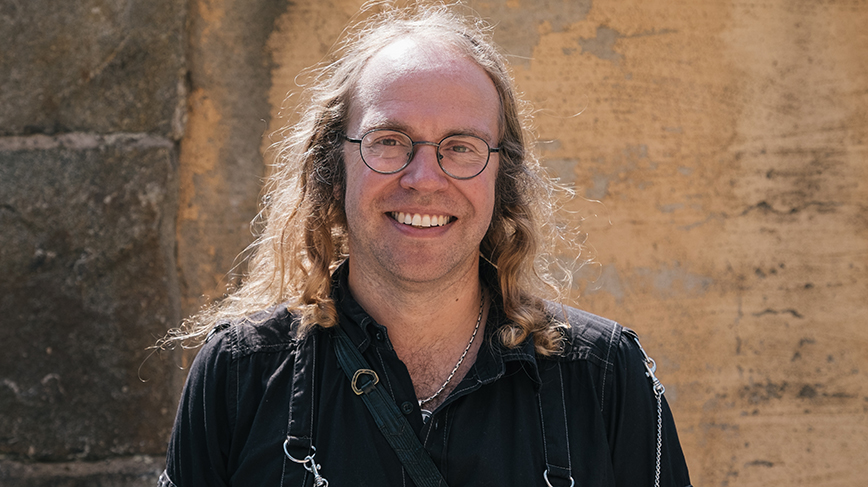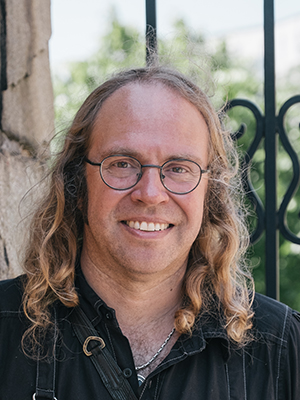“Nuclear power is now being taken seriously as a sustainable energy option”

Public resistance to nuclear power was strong when Professor Janne Wallenius began developing the technology for small, lead-cooled nuclear reactors. But times have changed, and ten years down the line there is increasing support for his project.
“The plan is that a factory in Sweden will be able to deliver serial-produced reactors to the market in just ten years,” says Janne Wallenius. He is the recipient of the KTH Innovation Award 2022.
KTH Innovation Award 2022 is received by Professor Janne Wallenius, a researcher at KTH and an entrepreneur in the company Blykalla/Leadcold. He has been driving the development of small lead-cooled nuclear reactors, known as SMRs or Small Modular Reactors, since 2013.
“The value in the new generation of nuclear power is finally being noticed. Now that we have a European natural gas crisis, the need has come even more to the fore, and our technology has the potential to meet Sweden’s needs for electricity in a safe, reliable and sustainable way,” he explains.
After investigating the market of small lead-cooled SMR prototypes in northern Canada in 2014-2015, Janne Wallenius returned to Sweden, where the nuclear power industry was being squeezed by the low prices on the Nordic electricity market. Four reactors in Oskarshamn and Ringhals were closed down.
“A planned major investment in SMRs from Dubai never materialised, and things felt pretty hopeless for a while. But I never gave up on my long-term plans, and suddenly one day there was an opportunity to apply for funding to set up on the British market,” he says.

The award is to recognise and celebrate individuals for their grit, creativity and courage to pursue their dreams.
“Grit is a quality worth having. If you have the right idea and there is genuine demand for it, your time will come.”
Professor Wallenius notes that nuclear power was viewed in a whole new light when the Swedish steel industry began transitioning to fossil free.
“There is a huge Swedish need for sustainable energy, and we can’t expand hydro power any more. The new generation of nuclear power and SMRs are necessary to balance the varying energy production from expanded wind power.”
The need for electricity is critical. Should society not primarily focus on alternative energies that are quicker to produce?
“The idea that it’s far quicker to expand, say, wind power is not quite true, since it takes at least ten years to build wires and cables that reach all parts of the country. So it doesn’t actually take any longer to introduce power-producing SMRs.
“We won’t be on track next year, but new Swedish nuclear power will be able to contribute to sustainable energy production well before 2050, when the EU aims to be climate neutral. We plan to have industrialised SMRs already by the first half of the 2030s,” Professor Wallenius explains.
Are you aware that a lot of people are critical towards nuclear power, bearing in mind the risks involved with radioactive waste?
“I can understand that the time frame may seem overwhelming as regards the waste issue, we are after all dealing with materials that are dangerous over a very long time. But we are confident in saying that we have every opportunity for safe final storage in copper pipes embedded in rock, and lead-cooled SMRs with recycling of used fuel produce considerably less waste.”
How expensive is the electricity produced by SMRs?
“Serial production will bring the costs down, and electricity from SMRs will be roughly the same price as from the major plants. In Korea for example, electricity from new, large nuclear power plants costs about 0.056 euro per kilowatt-hour, and that’s about the estimated average price for electricity from the SMRs.”
A finished SMR unit costs 1.5 billion euro, while the large nuclear power plants in the UK and Finland cost more like 74 billion, according to Wallenius.
“We have been
awarded a grant by the Swedish Energy Agency
, and we need a further 7 billion kronor (approx. €653m) to finalise the technology. Blykalla managed in the end of August to receive a private investment lead by the venture capital company Norrsken.”
Text: Katarina Ahlfort
Photo: Patrik Lundmark
